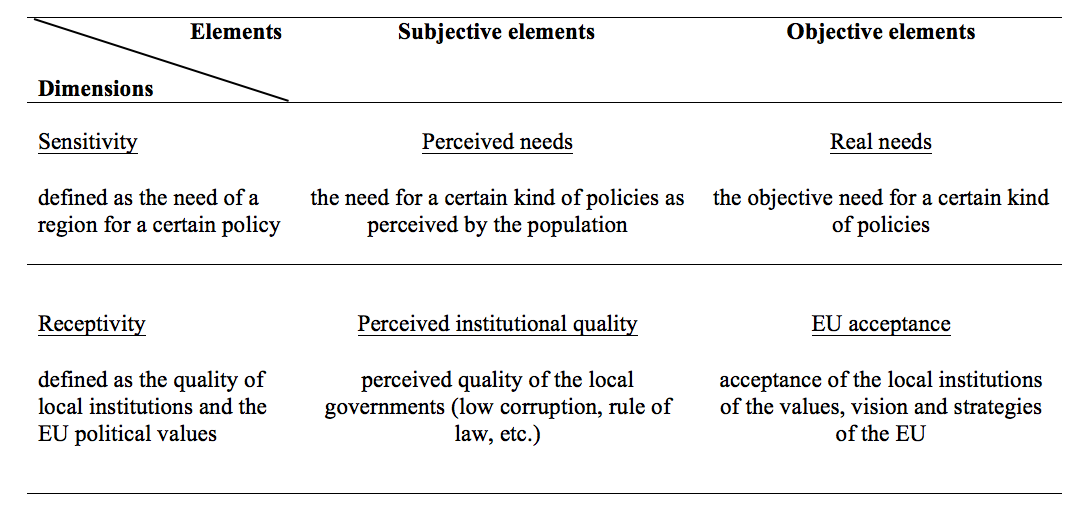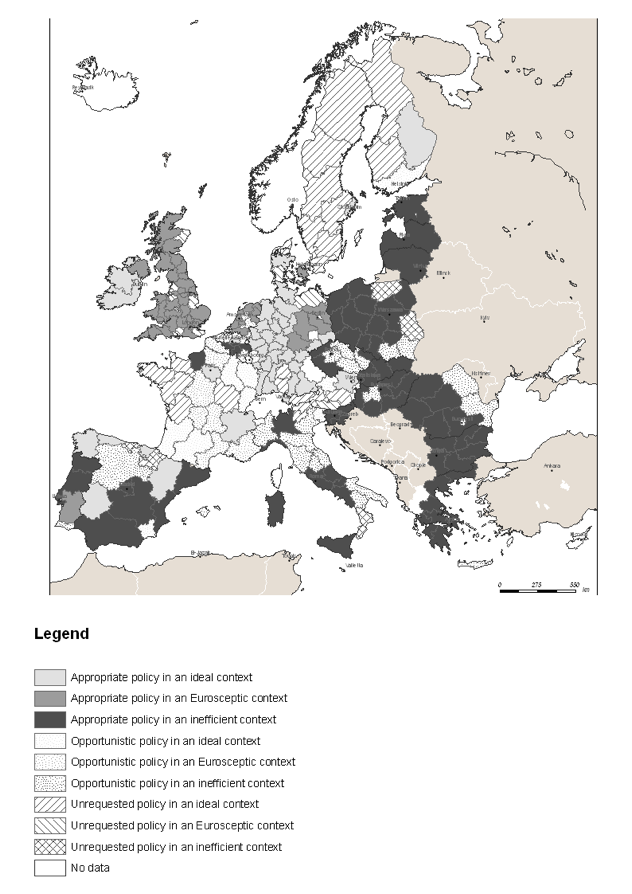
The trail from Brussels down to citizens’ hearts is long and bumpy.
May 31, 2017
INFORM-INIO network meeting: Making the results of Cohesion policy more visible to citizens
June 7, 2017The relationship between Communitarian policies and citizens’ identification in the EU values has been treated in the literature by several studies. They focused, for instance, on the impact of the introduction of the common currency or the Erasmus program, claiming that it is through actions of this kind that the EU becomes part of the everyday existence of citizens
Communitarian programs make people perceive the EU as a tangible element of their lives, and not just as a political construct, totally disjointed from their daily experiences. Therefore, the positive effect of these policies on individuals’ wellbeing is the element linking the implementation of EU actions to the creation of a Communitarian identity..
The same reasoning is expected to apply in the case of Cohesion policy. Every year, about one third of the Communitarian budget is devoted to regional policies aimed at fostering territorial development and, more in general, improving EU citizens’ quality of life. Hence, Cohesion policy should represent an extremely powerful tool for promoting EU values.
Two specific characteristics of Cohesion policy, however, make us assume its impact not to be homogeneous across regions. The first peculiarity is that, compared with other EU programs, Cohesion policy actions are specifically tailored on the needs of each EU region. In other words, they can take very different forms (from the provision of a transport infrastructure to the incentive for R&D activities to the training of unemployed people), depending on the necessity of the region where they are implemented. The second point concerns the fact that their implementation is directly managed by regional governments, which makes the policy outcome varying according to the effectiveness of local institutions in reaching their objectives.
In a nutshell, our assumption is that the perception of Cohesion policy is mediated, at the regional level, by the territorial characteristics defining different kinds of policy implementation settings. The scope of this work is therefore to identify these characteristics and to classify EU regions across the possible different kinds of policy implementation settings.
The territorial characteristics assumed to have an impact on the way in which citizens perceive Cohesion policy can be summarised in two dimensions: sensitivity and receptivity of the region to a certain policy action (Table 1).
Sensitivity is defined by the need of a region for policies in a certain field (transport, social, etc.). It is represented by two elements, one objective and the other one subjective: the real needs and the perceived needs.
Real needs capture the objective need of a certain region for a particular kind of policy. In principle, we assume that the consistency between Cohesion policy actions and real needs will improve citizens’ perception of the Communitarian actions. For instance, if a region needs transport infrastructure and Cohesion policy intervention fulfils this necessity, this action will lead to an improvement of the quality of life of citizens and, as a consequence, in a stronger recognition in the EU values and strategies.
Perceived needs, on the other hand, measure the subjective priorities of the population to different policy themes. In an ideal world, real and perceived needs should coincide, but mismatches may arise. Recalling our example about a policy setting with a real need for transport infrastructures, for instance, citizens might perceive actions in the social or environmental sphere as more urgent.


Table 1. Dimensions of regional policy implementation settings
The dimension of sensitivity characterizes the degree of appropriateness of Cohesion policy actions:- Appropriate policy: Cohesion policy is undertaken in policy fields (transport, social, etc.) in which the region has a real need. Our assumption is that when EU policy matches a real regional need it triggers a mechanism that, through the positive perception of the Communitarian action, leads to the reinforcement of EU identity.
- Opportunistic policy: Cohesion policy is undertaken in policy fields which are perceived as urgent even if no real need emerges. In this case the mismatch between perceived and real needs could lead to a positive perception of the policy outcome in the short term but, in the long run, to the weakening of EU identity, since the real regional priorities were not addressed by Communitarian actions.
- Unrequested policy Cohesion policy is undertaken in policy fields in which the region in which neither real nor perceived needs emerge. This situation is likely to have a neutral or even negative impact on EU identity, since Communitarian funds are spent on actions that are not necessary for the regional development.
The dimension of receptivity delineates the kind of institutional context where Cohesion policy actions are implemented:

- Ideal institutional context: it is marked by the simultaneous occurrence of high perceived institutional quality and a generalized support to the EU. These conditions are the ideal ones for reaching the policy outcomes and, as a consequence, promote EU identity ;
- An Eurosceptic institutional context: when the good quality of institutions is not matched with a widespread support to EU institutions. In this case the mismatch between the strategies of the EU and the ones of regional governments may lead to a weak communication of the role of the Communitarian institutions in the achievements of policy outcomes, leading to limited results in terms of EU identity ;
- An inefficient institutional context: it is characterized by not particularly efficient local governments. The relative inefficiency of regional institutions is likely to lead to poor policy outcomes, and therefore to have a neutral or even negative impact on EU identity.

Figure 1. Policy implementation settings in the field of the productive environment
A similar reasoning can be applied to several regions in EU12, classified among those areas where Cohesion policy would be appropriate but the degree of Euroscepticism is higher than the average (UK, Netherlands, Denmark, East Germany). Since most of these regions are included among the transition or more developed regions in the programming period 2014-2020, the relatively low (compared with less developed areas) amount of funds received might lead to a further weakening of EU acceptance This preliminary evidence on the characteristics of the policy implementation settings provided the empirical tools on which the further study of the relationship between and Cohesion policy and EU identification is based. The research paper can be found here.Roberta Capello and Giovanni Perucca Politecnico di Milano

